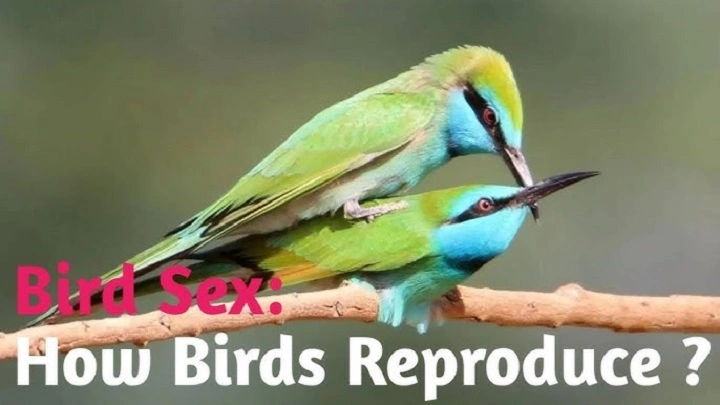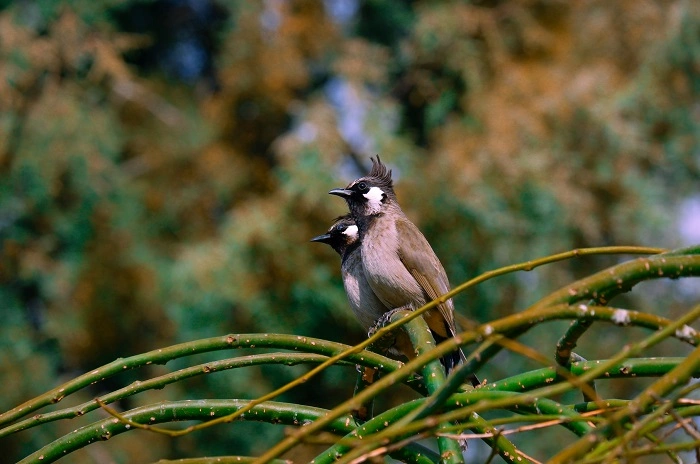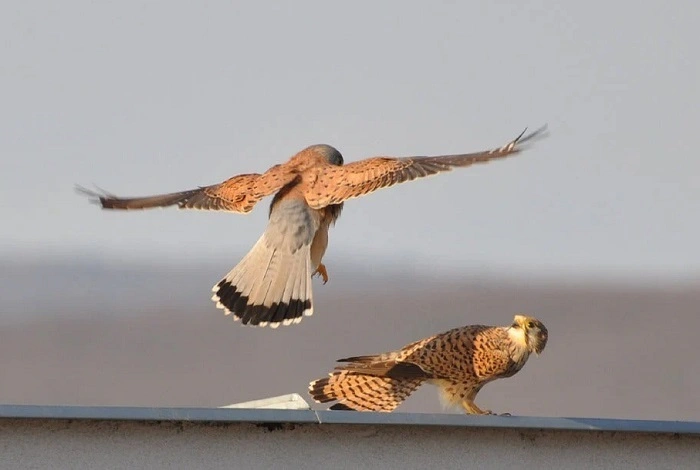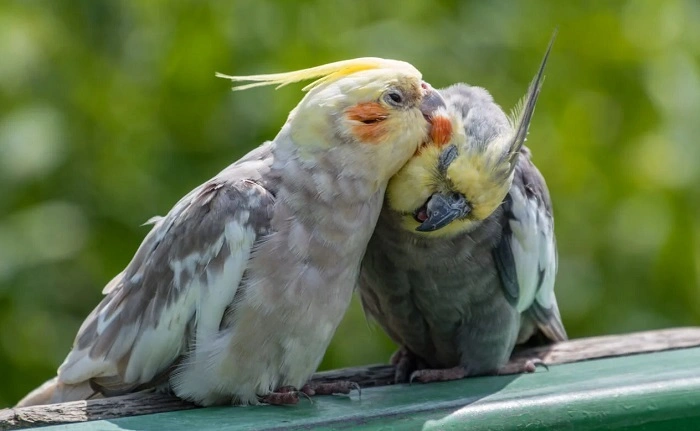Humans always ask silly questions about animals. Some are absurd. Some are interesting. Some are too humiliating to answer. But some of the most common are the following: do birds have balls?
It’s a child’s question, but one adults are secretly wondering. We see birds singing, dancing, and pairing up in the spring. But we never see anything hanging between their legs. Do they even have testicles?
The quick answer is simple: yes, birds do have balls. The longer answer, however, is far more compelling. Birds do indeed have testicles, but they are deep inside their bodies. They are different from mammal balls in almost every way. Not to mention, their biology has a wonderful survival, flight, and evolution tale to tell.
This book relates all that history. By the time you finish, you won’t only know the answer—you’ll understand why the question was worth asking.
Do Birds Really Have Balls?
Yes. There are testes on males, too, as on other animals. But you can’t see them. Birds, not mammals, lack a scrotum. Their balls are kept inside their body cavity, close to the kidneys.
This makes sense when you think about it. Birds are designed to fly. Anything outside the body would cause drag or be unsafe in the event of injury. Having internal testes permits them to be streamlined and safe.
So while the joke “do birds have balls” is amusing, the scientific answer is a simple one: yes, but they’re internal.
Why Are Bird Balls Inside the Body?
Streamlining for Flight
Flight is work. Birds need light, streamlined bodies. Balls on the outside would be a drag. Internal ones allow them to stay streamlined.
Heat Tolerance
Mammals expose testicles to the outside of the body so that they can lower their temperature. Sperm is extremely sensitive and can overheat easily. Birds are no different. Their sperm works well even at high body temperatures.
Safety from Injury
Birds fight, dive, and crash into branches. Internal testes are more protected from damage.
Showiness was not evolution’s pick.
The Magic of Seasonal Testes
One of the strangest facts: bird balls drop and grow exponentially.
- They’re small during winter, usually pinhead size.
- They grow 300 times breeding size in spring.
- They go back to small size after mating season.
This cycle conserves energy. Why haul big testes around all year if you’ll be using them only a few months?
Look at the sparrow in January. His testes are virtually microscopic. But in April, when the days get longer, hormones take charge. Suddenly, his testes expand. He sings louder, defends his territory, and courts females. Biology has turned a switch.
Bird Testes Throughout the Year
| Season | Testes Size | Behavioral Effect |
| Winter | Almost microscopic | Quiet, energy-saving |
| Spring | Up to 300 times larger | Singing, fighting, breeding |
| Summer | Large, active | Peak breeding season |
| Autumn | Declining again | Less aggressive, quiet |
Bird Balls at Work: Examples from a Number of Species
Robins
Springtime male robins sing all day long from dawn to dusk. Why the effort? Testosterone from enlarged testes. The hormones stimulate song and aggression.
Chickens
In roosters, testes are much larger throughout the year but hidden within. No surprise that roosters crow every morning at sunrise and mate frequently. Farmers centuries ago used castration (capons) to modify rooster behavior—good proof of testes activity.
Penguins
In penguins, testes become larger before the upcoming breeding season. Hormones cause males to fight over nesting and woo females with bowing ceremonies.
Ducks
Water birds are the exception because most of them actually do have penises, unlike most birds. But their testes still remain internal, illustrating that the pattern continues in species.
Ostriches
These big flightless birds still keep their balls internally. Ostriches utilize size and stamina but not flight. But evolution supplied the same design.
Bird Balls and Courtship
Bird reproduction is not all about sperm. All that birds do in spring is regulated by testicular hormones.
- Songs – Testosterone induces male songbird singing.
- Colors – The glossy finch and bunting colors are hormone-induced.
- Dances – The elaborate grouse and crane courtship displays are breeding-hormone-induced.
- Aggression – Males fight fiercely for mates and territory.
No testes, no bird song, no sex dance, no spring soap opera.
Do All Birds Have Two Balls?
Yes. Male birds typically have two testes. But one might be a bit larger.
Females, on the other hand, typically have just one functional ovary. Asymmetry saves flying weight. But males keep both testes since sperm production is too important to cut in half.
Mammals vs. Birds: A Comparison
| Feature | Mammals | Birds |
| Location | External (scrotum) | Internal (near kidneys) |
| Size | Reasonably uniform | Seasonal growth/shrink |
| Temperature | Cooler required | Warm-tolerant sperm |
| Function | Sperm + hormones | Sperm + hormones |
| Evolution | Evolved scrotum | Retained reptile-like form |
Evolution of Bird Balls
Birds evolved from reptiles. Their testes, like those of reptiles, are internal. Mammals went a different direction, which put them on the outside where they could be cooled.
Birds went a different way. They didn’t opt for external cooling; they developed heat-resistant sperm. That enabled them to put testes inside, where they’d be both safe and aerodynamic.
It’s a wonderful example of two evolutionary solutions to the same problem.
Fun Facts About Bird Balls
- The largest testes in relation to body size are those of promiscuous birds like grouse and some songbirds.
- A finch’s testes can enlarge from the size of a grain of rice to the size of a grape in a matter of weeks.
- Roosters are able to mate dozens of times daily due to the fact that their testes are internal.
- In some tropical birds, testes are enlarged for longer periods since these birds breed throughout the year.
Cultural Myths About Bird Balls
Humans are fascinated with animal sex. Birds especially have legends about them:
- Birds were thought to be asexually reproducing animals by some cultures, as their balls weren’t apparent.
- Farmers used to joke that roosters crowed because their “balls were on fire.”
- Even internet memes make fun of the question “do birds have balls,” blending biology and comedy.
Under the joke is curiosity—and the truth is stranger than fiction.
Science and Bird Balls
Scientists do examine bird testes to learn about breeding.
- In the lab, hormone levels are tracked in order to determine when birds will breed.
- Conservation does track testes development for captive breeding programs.
- In poultry production, rooster testicles are sometimes surgically removed to create more docile “capons.”
So yes, even the question of balls does have some practical applications.
Bird Balls and the Cloacal Kiss
Most birds do not have penises. They mate by touching cloacas in a quick “kiss” instead.
- Male’s sperm, which is made in the testes, travels through ducts to the cloaca.
- Female’s cloaca accepts the sperm.
- Fertilization is internal.
Everything relies on those hidden testes working properly.
Do Birds Ever Get Testicular Problems?
Yes. Like mammals, they do get problems.
- Tumors in roosters
- Hormonal imbalances in parrots
- Infertility in captivity
Veterinarians do operate on pet birds for reproductive issues, but not routinely as for mammals.
Why the Question is Important
The question “do birds have balls” may be a joke, but it leads to an appreciation of:
- Evolutionary engineering for flight
- Seasonal reproductive cycles
- The control of behavior by hormones
- Conservation biology
It shows that embarrassing questions can be extremely insightful.
FAQs: Do Birds Have Balls?
Do birds have male balls?
Yes, all males possess internal testes.
Where is a bird’s ball?
In the body, near the kidneys.
Do birds’ balls increase and decrease in size?
Yes, they become 300 times larger than their usual size during mating season.
Why don’t birds have outside testicles?
Because inner ones are lighter, safer, and pleasanter to fly.
Do chickens have balls?
Yes, roosters possess large internal testes that produce sperm and hormones.
Bird testes don’t hang, but instead are hidden. They swell in spring, shrink in winter, and are the cause of everything from song to dance to combat. They’re a masterpiece of evolutionary ingenuity, illustrating the ways life has changed in order to fly, live, and procreate.
Next time you spot a rooster strutting around a backyard or a robin during dawn song, just remember—his concealed testes are behind the spectacle. It’s fun, fascinating, and basically required.
For, as it turns out, birds do have balls. And they put them to good use.





